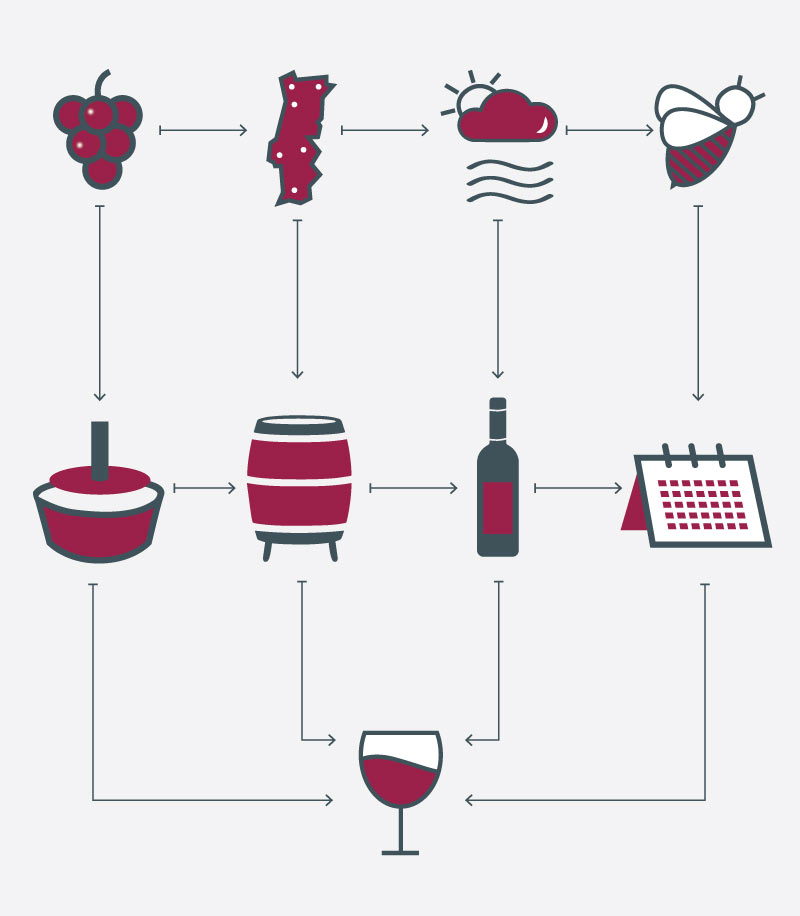
We often wonder how much of that wine talking about flavours and aromas is true. After all, isn’t it 100% grape?
Sure, but the truth is that, the more we taste it, the more we’ll feel aromas like vanilla, tropical fruits or even tobacco. Knowing that producers don’t add spices or tobacco leafs, how does it end up having all these flavours?
3 factors influencing wine aromas
#1: grapes
Grapes are impressive little fruits. All the decisions oenologists make during the vinification process are based on the varieties chosen, as they influence the wine’s final aroma. That is why the origin of grapes or the way its fermentation happens is so important. But having the grape variety A or B alone means nothing. Proper vineyards and good agricultural practices are paramount in growing good grapes, which in turn will lead to great wine.
#2: terroir
Care and agricultural talent is needed, but the location is critical to define a wine’s character: is it sunny? How’s the soil? Is it crowded with insects – like bees, that distribute polens through the vineyards? Is it near the sea, as it often happens in Portugal, which adds a “salty note” to the wines flavour and aroma?
#3: talent
Nature has all the ingredients, but without the human genius we would have little more to drink than water, milk and freshly squeezed juices – which is OK but not enough. Pretty much everything related to wine is the work of the oenologists that put their best efforts to make the best out of what nature provides them: the way the grapes are smashed, the place where it is fermented, or how much time wine is in contact with wood, all of that influences the end product.
Which elements are more important?
None works alone; the combination of them is what makes the trick. But wine is so subjective that the most important element is often not the place wine comes from, but the place you’re drinking it; not the skill of the oenologist, but the funny conversation you’re having with your friends while sharing a bottle.

